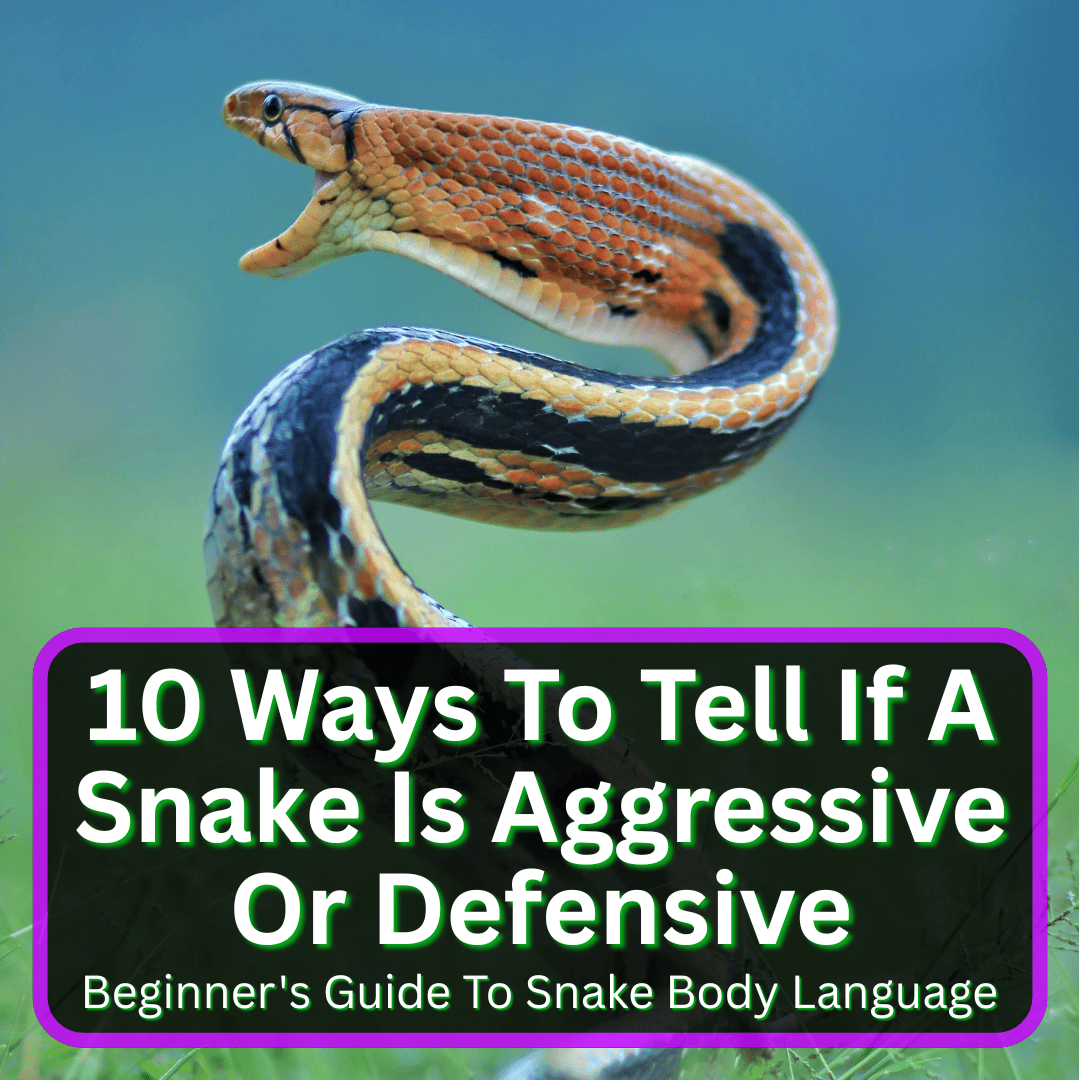
In fact, they prefer to have nothing to do with us at all.
But when they feel threatened, that can change.
That’s why it is important to be able to distinguish whether a snake is being aggressive or just defensive.
Luckily, you can get a good idea of what’s going on in a snake’s if you can read its body language.
Snakes have a whole range of signals—nervous, curious, defensive, you name it.
Pay attention to how they move their bodies, heads, and tails, and you’ll start to pick up on what they’re saying.
10 Ways To Tell If A Snake Is Aggressive Or Defensive
A snake’s behavior and body language will tell you exactly is it is feeling aggressive or defensive. Here are ten clues to look for.
1. Snake Coils Into An S-shape, Ready To Strike
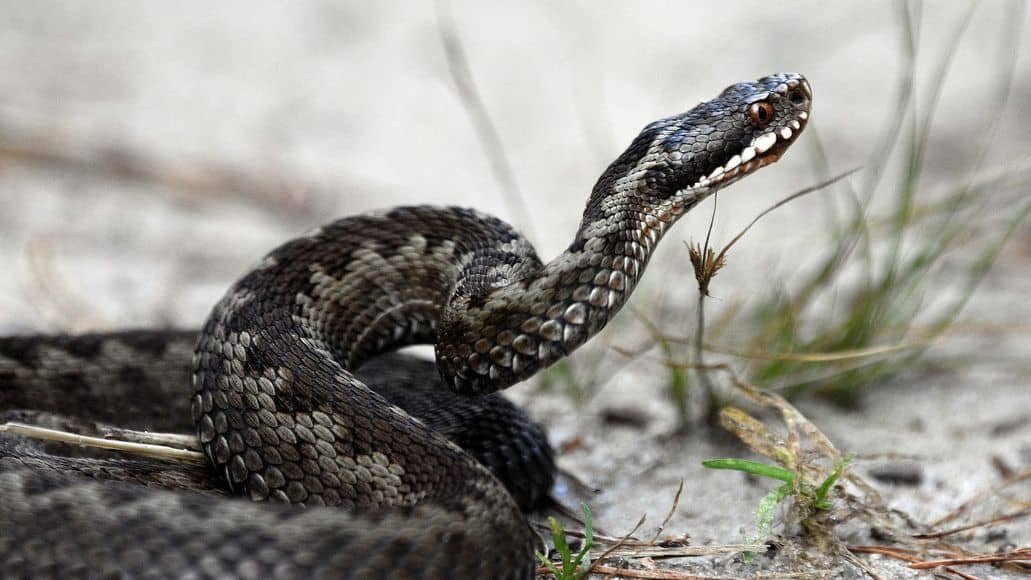
If a snake feels threatened, it’ll often curl itself into a tight S-shape. That’s its launch pad for a strike, just in case things go south. You’ll see the head and neck form that classic S. The rest of the body stays coiled behind, waiting.
Usually, the snake will fix its eyes on you, pupils wide, not blinking. Its body looks tense, and you might even notice its breathing pick up.
Now, not every S-shape means you’re about to get bitten. Some snakes just fake it to scare you off. Still, if you see that pose, it’s smart to take it seriously. Back away slowly. Don’t freak out or make a lot of noise. Give the snake some room to chill out.
The tighter the S, the more stressed out the snake is. A looser curve? Maybe it’s just being cautious. But a really tight S? That snake’s on edge.
2. Hissing Loudly To Warn Off Threats
If a snake starts hissing, it’s basically telling you to get lost. That hiss means it feels threatened and wants no part of a fight. Snakes make that sound by forcing air out of their mouths. Think of a tire losing air or a balloon deflating.
The more scared the snake gets, the louder and sharper the hiss. Some will even puff themselves up to look scarier, maybe even spread out in that S-shape again. If the first hiss doesn’t work, some snakes will go even louder, like a last warning before they do anything drastic.
Different species hiss in their own style. Cobras go all out, spreading their hoods and hissing like crazy. Even little garter snakes will hiss if they’re spooked.
Honestly, hissing is a good sign for you. It means the snake’s giving you a chance to leave before things escalate. Most would much rather scare you off than actually fight.
3. Rapid, Jerky Movements Indicating Agitation
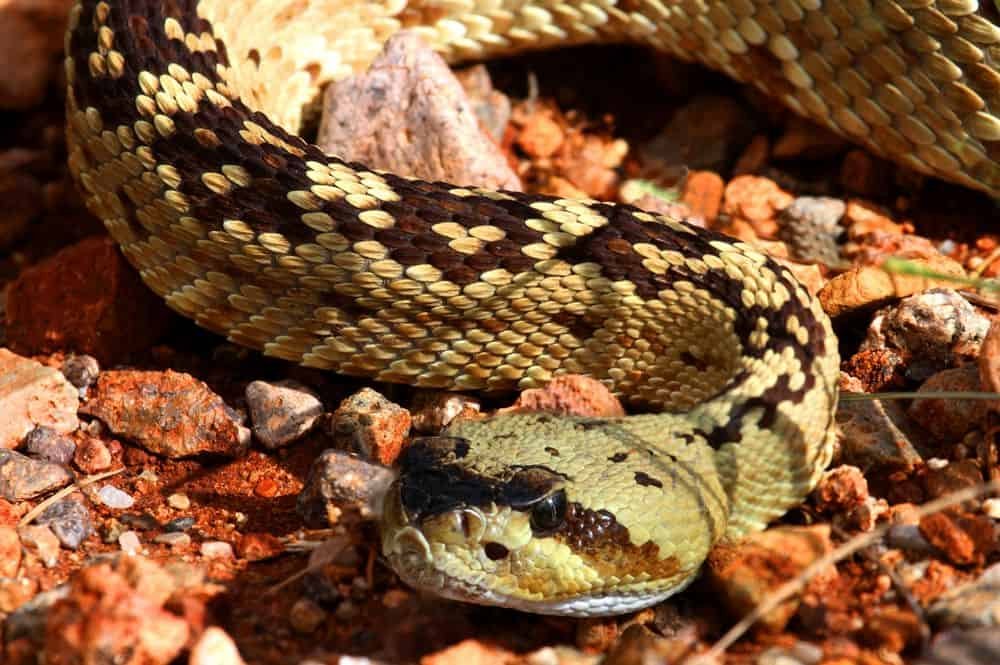
Stressed or threatened snakes can get pretty twitchy. Their movements turn quick and jerky, nothing like that smooth slither you usually see.
You might spot a snake jerking its head or making sudden body twitches. That’s a clear sign it’s anxious about something nearby.
Sometimes, they’ll pace back and forth or keep moving around their enclosure in a way that just looks restless.
Strong smells, like perfumes or cleaning sprays, can set them off too. If you notice the snake reacting to things that never bothered it before, that’s agitation.
Those jerky moves? That’s the snake preparing to bolt or defend itself. It’s not happy, and it’s letting you know.
If your snake acts this way, it’s probably time to step back and check its setup. Double-check the temperature, lighting, and hiding spots to make sure it feels safe.
4. Flattening Body To Appear Larger
Threatened snakes often flatten out to look bigger and more intimidating. It’s a classic defense move. Both venomous and harmless snakes do this, spreading their bodies wide against the ground to seem larger.
This trick helps them look more dangerous to anything that is thinking about messing with them. Sometimes it even helps them blend in a bit more.
Some will flatten their necks or heads too, making the whole display even more dramatic.
If you spot a snake spreading itself out, it’s basically saying, “Don’t mess with me.” It’s trying to avoid a fight, not start one. Give that snake plenty of space. It’s stressed and just wants to be left alone.
5. Tail Waving Or Vibrating As A Warning
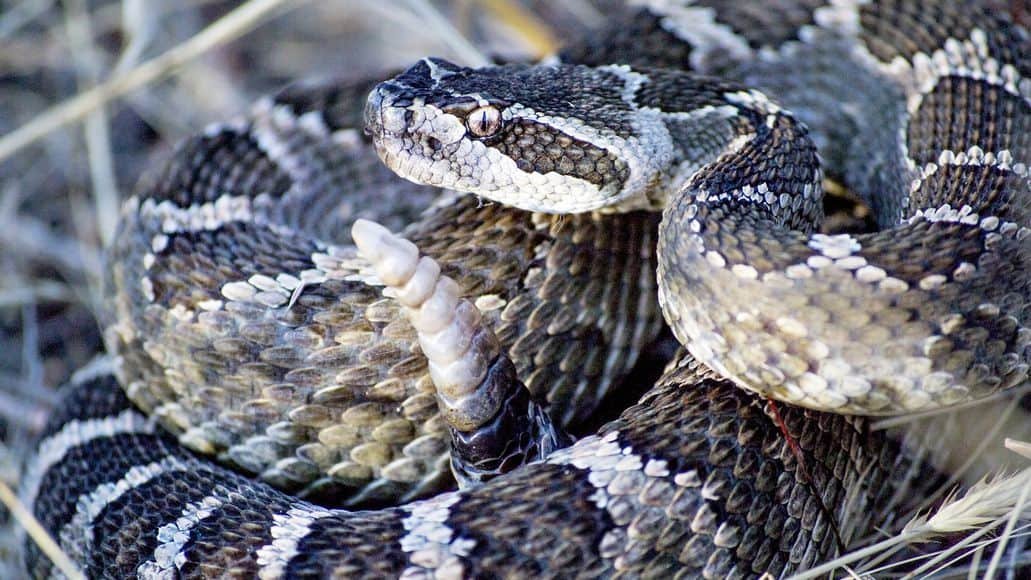
When a snake starts shaking or vibrating its tail, that’s a big red flag. It wants you to back off, and it’s not being subtle about it.
Of course, rattlesnakes are famous for this. They shake their rattles to make that buzzing sound as a warning. But they’re not the only ones. Lots of other snakes will vibrate their tails against leaves or the ground, making a rustling noise.
The tail usually moves side to side or up and down, really fast. It’s not a gentle wag. It’s urgent and sharp.
Even baby rattlesnakes do this, even if their rattles aren’t fully developed. They’ll use whatever they’ve got to make noise.
If you see a snake vibrating its tail, give it space right away. It feels cornered and might lash out if you push it. Most snakes would rather get away than fight, if you let them.
6. Striking Without Biting, A Bluff Behavior
Some snakes pull off fake strikes, lunging forward but not actually biting. It’s a bluff, meant to scare you off without wasting energy or venom.
You’ll notice the snake suddenly dart forward, but it’ll stop short or keep its mouth closed. That’s not an attack, just a warning.
Ball pythons do this all the time, and plenty of other species too. They’re basically saying, “I mean business, but let’s not make this a real fight.”
If you see a bluff strike, back off and give the snake some breathing room. It’s just trying to protect itself.
Real strikes are faster and usually make contact. Bluff strikes look dramatic, but they’re actually the snake holding back.
7. Slow Slithering Towards You Out Of Curiosity
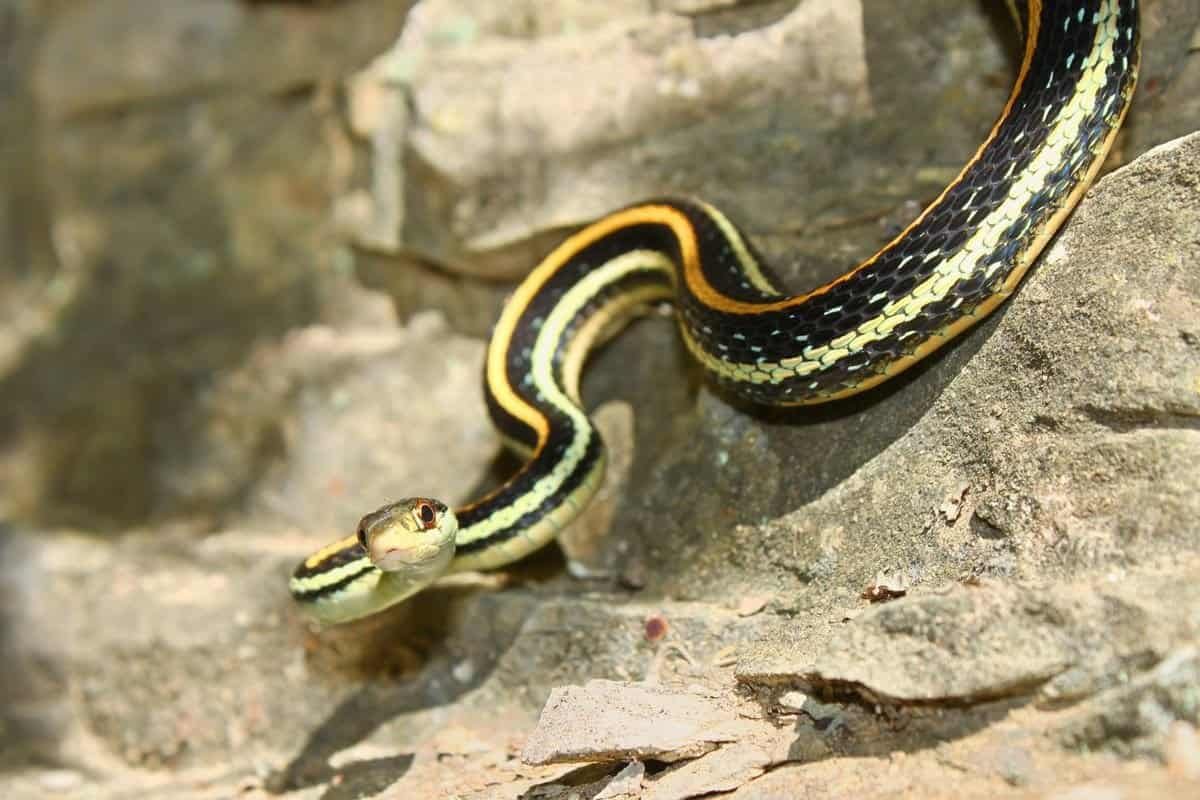
Sometimes, a snake will come toward you slowly and calmly. That’s usually curiosity, not aggression. Curious snakes keep their heads up but relaxed, and their bodies stay loose as they move forward.
You’ll probably see a lot of tongue flicking. That’s how they “smell” and check things out. If the snake’s moving slow and steady, it’s just trying to figure out what you are. Aggressive snakes move fast or show other warning signs.
Best move? Stay still and let the snake do its thing. Most will lose interest and wander off once they realize you’re not food. Don’t make sudden moves, though. That could spook the snake and flip curiosity into defensiveness.
This kind of approach is pretty common with snakes that don’t mind people much. They’re comfortable enough to explore instead of hiding.
8. Avoiding Eye Contact, Showing Defensive Stance
If a snake feels threatened, it’ll often avoid looking at you directly. That’s a sign it wants out, not a fight.
It might turn its head away or even tuck its face under its coils. You’ll see it coil up tight or press itself low to the ground—trying to make itself smaller and less noticeable.
Defensive snakes keep their heads low and necks curved, not high and alert like aggressive ones. Sometimes, they’ll face away but keep their body ready to bolt. They’re watching for an escape route.
If a snake acts like this, it’s scared. Give it space to leave safely. Most would rather run than fight if they get the chance.
9. Sudden Fast Slither Towards Your Hand
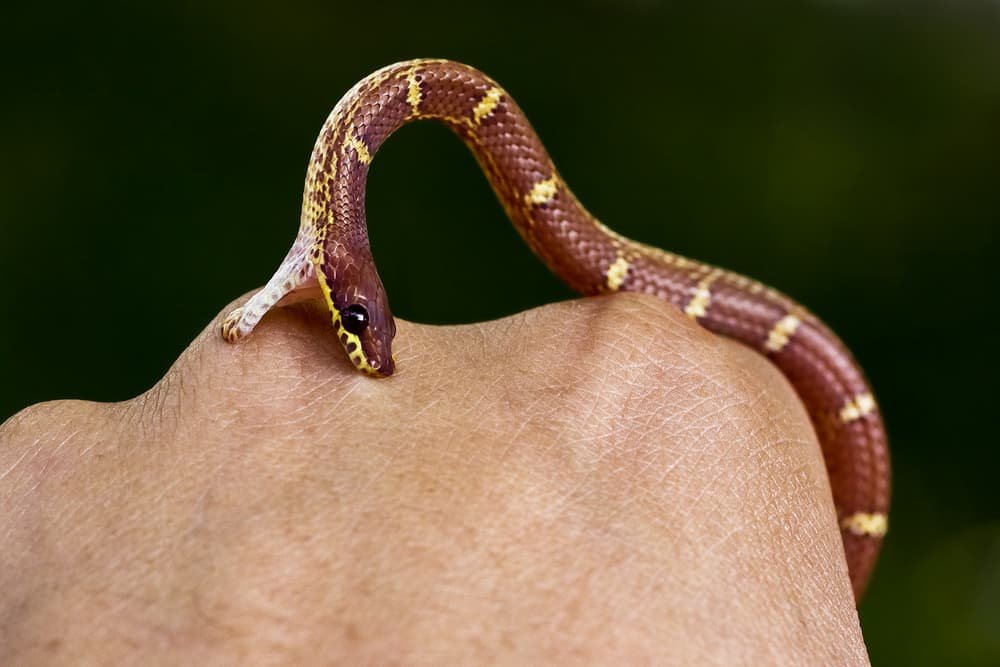
If a snake darts at your hand, that’s a clear sign it’s feeling aggressive. That’s not natural curiosity. It’s a defensive move.
This usually happens when you reach into their space or get too close. The snake sees your hand as a threat and reacts fast. That quick movement often leads up to a bite. The snake is focused, body tense, and not messing around.
If you see this, pull your hand back right away. Don’t try to touch the snake when it’s acting like that. The snake is trying to scare you off by being bold. It’s not comfortable, and it wants you to know it.
10. Keeping Head Elevated And Still Before Striking
Right before striking, a snake will hold its head high and completely still. It’s lining up its shot, basically. You’ll see the head freeze for a few seconds. The snake’s calculating distance and getting ready to launch.
This is different from normal movement, where the head bobs side to side. Before striking, everything stops. Sometimes the mouth opens a bit, body coiled underneath, just waiting.
Once you spot that frozen, elevated head, you know the snake is ready to act. And probably within seconds.
Understanding Snake Behavior
Snakes act defensive when they’re scared or threatened, not because they’re out to get you. Their behavior really depends on what’s happening around them and how safe they feel at that moment.
Why Snakes Display Aggression Or Defensiveness
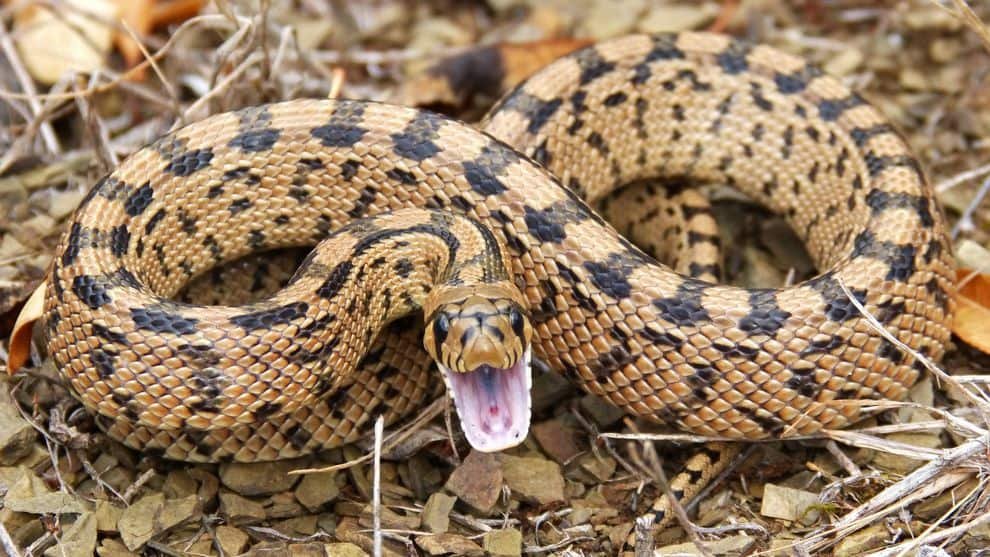
Snakes don’t feel aggression like people do. They actually don’t have the brain parts for those kinds of feelings. What looks like aggression is really just defensiveness. The snake’s trying to protect itself when it feels unsafe.
Common defensive signs are:
- Coiling up
- Loud hissing
- Fake strikes
- Raising their head
When snakes bite, they think they’re fighting for survival. They don’t see you as a friend. They see a possible danger. When stressed, snakes move around a lot and can’t settle down. That’s a sure sign they’re not comfortable.
And no, your snake doesn’t hold grudges. It just reacts to how it feels right now, not what happened yesterday.
Influence Of Environment On Mood
Your snake’s surroundings shape its behavior in a big way. If their home feels stressful, they’ll probably act more defensive.
Key environmental factors:
- Temperature that’s too hot or too cold
- Not enough hiding spots
- Lights that are too bright
- Loud or jarring noises
- Getting handled too much
Snakes really need places to hide when they’re uneasy. Without cover, they stay tense and on guard, ready to react fast.
Even small changes in their tank, like moving decorations or cleaning, can rattle them. Suddenly, their safe space feels unfamiliar.
Agitated snakes keep a close eye on you. They’ll track your hands and movements, just in case you’re a threat.
Time of day plays a role, too. Some snakes just get more jumpy or defensive at certain hours. It depends on their species and routine.
Common Misconceptions About Aggressive Snakes
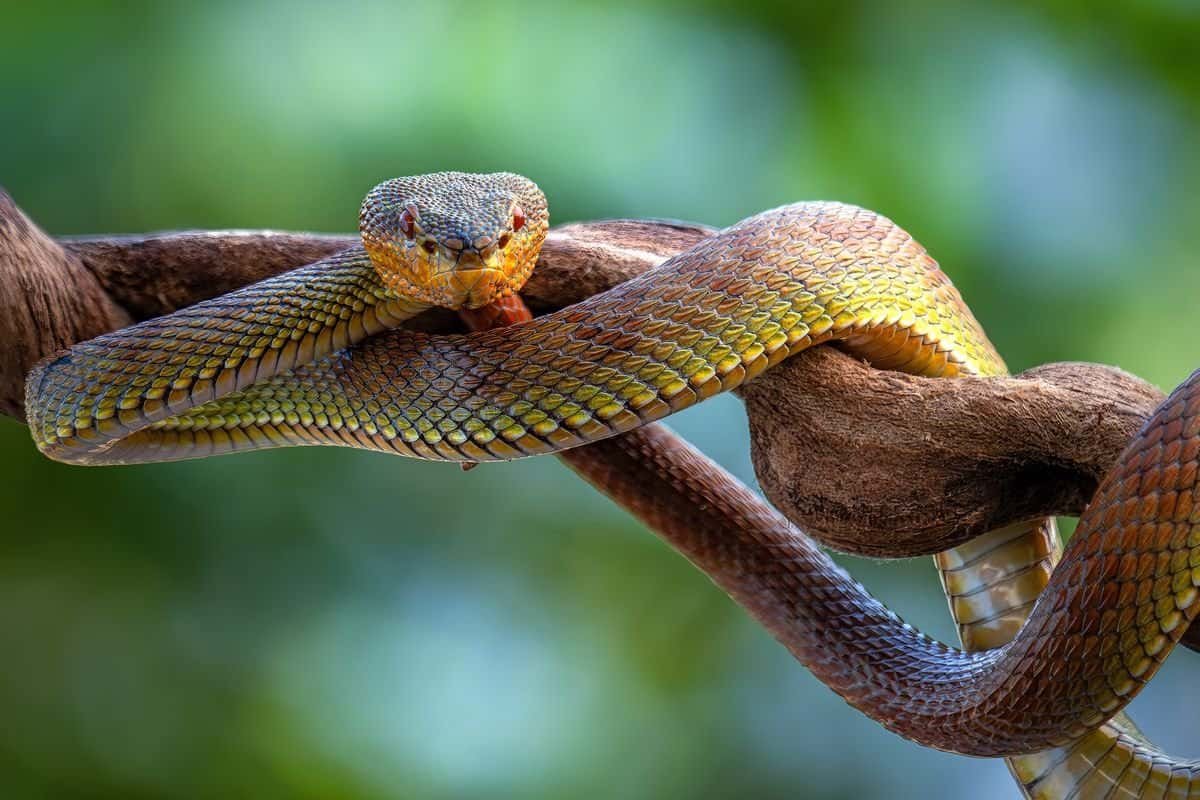
People often see ordinary snake behavior and think it’s aggression. That misunderstanding leads to a lot of unnecessary fear and some bad choices. Most defensive moves get called attacks, but usually, the snake just wants to get away or feel safe.
Signs That Are Often Misread
Defensive posturing, like coiling up or raising the head, gets mistaken for aggression all the time. In reality, the snake’s probably just scared and hoping you’ll back off.
If a snake flattens its body or puffs up, it’s not being nasty. It’s trying to look bigger, sort of like a cat arches its back when it’s spooked.
Hissing sounds make a lot of people nervous, but hissing is really just a warning. The snake’s saying, “please leave me alone,” not picking a fight.
Quick movements can look scary, but sometimes the snake’s just darting for its hide. If you’re in the way, it might seem like it’s coming at you, but it’s not chasing you down.
Even striking motions are often just for show. A frightened snake might strike at the air or the ground, not even trying to hit you. It’s a bluff to get you to back off.
How Fear Can Lead To Mistaken Assumptions
Your natural fear response can turn normal snake actions into something that feels dangerous. When you’re afraid, your mind hunts for threats where there might not be any.
Distance changes everything about how a snake looks. From far away, a snake might seem aggressive, but up close it’s just sunbathing or looking for food.
Cultural stories have painted snakes as villains for ages. Movies and books love to show them as evil or out to get people, but that’s not reality.
Panic reactions make it easy to misread what a snake’s doing. If you freak out and run, the snake’s quick movement might look like it’s chasing you, but most of them just want to get away from people.
Group fear can really mess with your perspective. If everyone around you is scared of snakes, it’s easy to start seeing threats in normal behavior.
How To Tell If A Snake Is Aggressive Or Defensive: Conclusion
Getting a feel for snake behavior really does help you stay safer out there. Most snakes just want to be left alone. They’re not out to pick a fight. They’ll usually act defensive only when they’re cornered or spooked.
Remember these key points:
• Snakes almost never go on the attack just for the sake of it
• Defensive moves are all about protecting themselves
• Those warning signs? They’re your cue to take a step back
• Seriously, keeping your distance is the best move
If you spot a snake, just give it a clear path to get away. That one habit can stop most bad run-ins before they start. Honestly, snakes would rather disappear than deal with people.
Quick safety tips:
- Keep at least 6 feet between you and the snake
- Don’t box a snake in
- Pay attention to warning signals like hissing or sudden movements
- Let the snake make the first move to leave
Picking up on snake body language makes hiking or exploring a lot less stressful. You get to enjoy the outdoors and, at the same time, show some respect for these creatures. Let’s not forget that snakes are actually great at keeping pests in check.
If you’ve got pet snakes, this stuff matters even more. You’ll catch on when your snake’s feeling uneasy or stressed, and that means you can make things better for them. Happier snake, happier you, right?
Honestly, it takes a bit of practice to read snake behavior well. The more you watch (from a safe spot!), the easier it gets to notice the little differences. Before long, you’ll probably feel a lot more at ease around these weirdly fascinating animals.
Leave a Reply